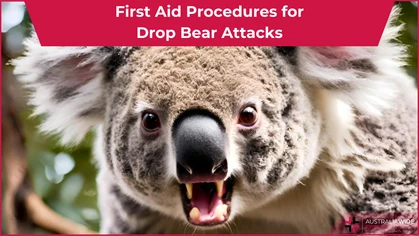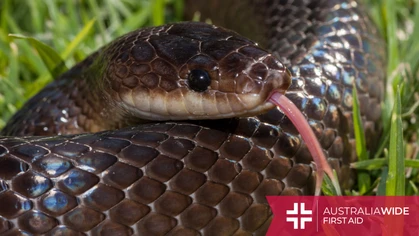A Comprehensive Guide to the Green Head Ant

Bites and Stings

Found throughout Australia, Green head ants are renowned for their metallic green head and resilience in a wide variety of environments. They have been known to defend their nests aggressively when disturbed, even spraying intruders with formic acid.
The Green head ant, Rhytidoponera metallica, also known as the Green tree ant, is a species of ant native and endemic to Australia. In Queensland, they’re also known simply as a green ant. While these ants can sting, they’re not usually dangerous. However, they can cause allergic reactions in some people, so it’s important to monitor somebody who has been stung. This article will go over the green head ant in depth, and how to identify it. If you would like to learn more about providing first aid in the event of an insect bite or sting, book a First Aid course with us today. You can also learn how to provide first aid in an education and care setting. We have locations around most places in Australia.Appearance
They are small, measuring about 5 to 8 millimetres long, and have a distinctive metallic green head and thorax. This green can vary from a green-blue to a green-purple. They are considered one of the most striking ant species due to their unique appearance.Preferred Distribution and Habitat
Green head ants are found throughout Australia, but they are most common along the east and south-east coasts. They are known to thrive in disturbed areas, such as gardens and urban areas, as well as forests and woodlands. They build their nests in trees, under rocks, or at the base of shrubs, usually close to a source of food and water. Green head ants are also known for their adaptability to different environments. In Western Australia, for instance, they are common in semi-arid areas and are known to be more active during the cooler months. They also show a preference for animal material as a source of food, such as dead insects and small vertebrates. They’re both scavengers and predators, hunting and foraging during the day amongst vegetation and on the ground.Are Green Head Ants Dangerous?
Green head ants are not considered dangerous to humans, but they can be aggressive if their nest is disturbed. They are known to swarm and bite repeatedly, causing pain, swelling, and redness. An ice pack can be used to alleviate the pain of a sting. Their venom is not potent, but it can cause a burning sensation and allergic reactions in some individuals. Symptoms of an allergic reaction include difficulty breathing, swelling of the face, lips, and tongue, and nausea. If you suspect an allergic reaction, seek medical attention. Despite their aggressive behaviour, green head ants are not entirely without compassion. They are known to care for their injured and sick, and they will even carry their wounded back to their nest. This is likely due to their highly social nature and the fact that they rely on each other for survival.Interesting Behaviours and Daily Habits
Green head ants are highly social insects, living in colonies of up to 10,000 individuals. They communicate with each other using a variety of signals, including chemicals and sounds. They are active during the day and are known to "sunbathe" by standing on leaves and branches exposed to the sun. This behaviour is thought to help regulate their body temperature and may also be used to dry their bodies after rain. Green head ants are also known for their unique defence mechanisms. When their nest is threatened, they will swarm the intruder and spray formic acid, which can cause severe irritation and burns. They are also able to build their nests in a way that protects them from fire. They construct their nests from dry plant material, which acts as insulation, and they position the nest in a way that minimises exposure to the sun. This helps to keep the nest cool and prevents it from catching fire. These ants are so resilient that they’re often the first out and about, looking for food, after fire and rain. They’re even sometimes found as soon as embers have stopped smouldering. They can even hunt during rain, as long as it’s only a light shower in continued sunshine.Final Thoughts
Despite not being dangerous, green head ants still have quite a painful sting. They’re even known to cause allergic reactions in people from a single sting, so if you or somebody near you has been stung, keep a close eye on them to make sure an allergic reaction doesn’t occur. If you would like to learn more about providing first aid in the event of an insect bite or sting, book a First Aid course with us today. You can also learn how to provide first aid in an education and care setting.
Originally published at
https://www.australiawidefirstaid.com.au/resources/green-head-ant
as part of the Australia Wide First Aid Articles Library









